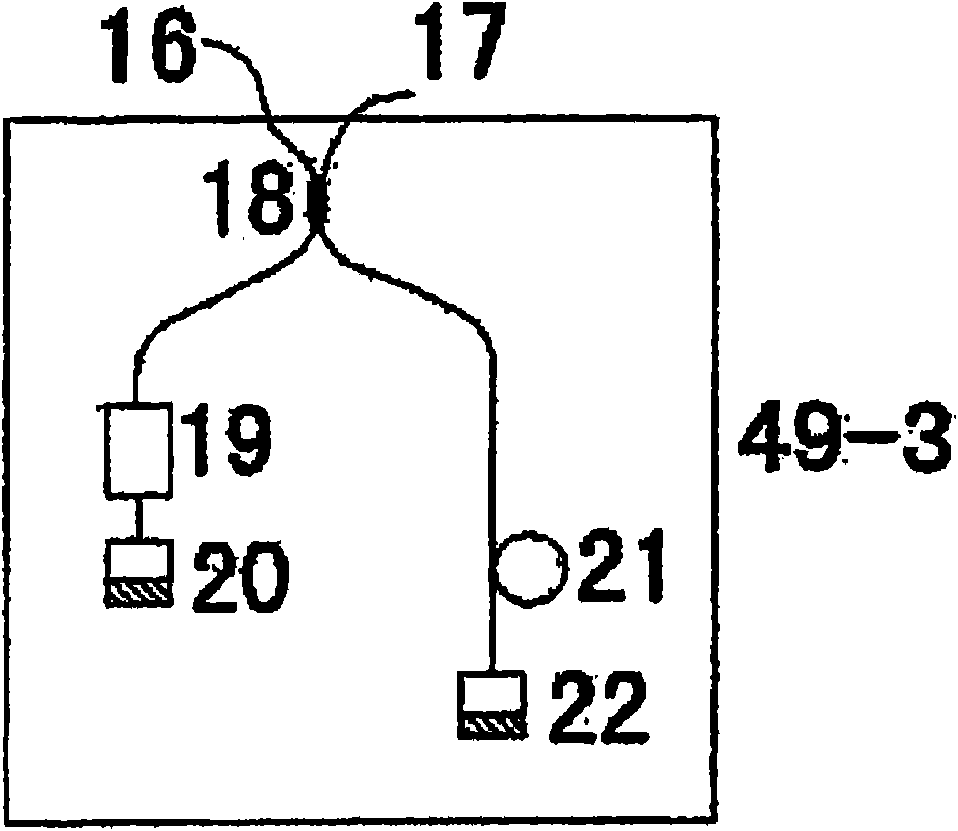Polarization controlling encoding method, encoder and quantum key dispatching system
A technology of quantum key distribution and polarization control, applied in the field of coding methods and devices in quantum key distribution, can solve the problems of reduced anti-interference ability, hidden safety hazards, not too long and too low interference frequency, and achieves environmental protection. The effect of reduced requirements, reduced speed requirements, improved practical stability
- Summary
- Abstract
- Description
- Claims
- Application Information
AI Technical Summary
Problems solved by technology
Method used
Image
Examples
Embodiment 1
[0036] The first composition structure of the polarization control encoder in the quantum key distribution system of the present invention is as follows: figure 1 As shown: it consists of two 2×2 3dB polarization-maintaining beam splitters 3, 6, a polarization-maintaining phase modulator 5 and a polarization-maintaining delay line 4, which together form a polarization-maintaining Mach-Zehnder interferometer. One of the two ports 1 and 2 on one side of the 3dB polarization maintaining beam splitter 3 is used as the input end of the polarization control encoder, and one of the two ports 7 and 8 on the other side of the 3dB polarization maintaining beam splitter 6 is used as the output end , the polarization-maintaining phase modulator 5 and the polarization-maintaining delay line 4 (arbitrary order) are inserted into any arm of the above-mentioned Mach-Zehnder interferometer together, or both are respectively inserted into two arms of the above-mentioned Mach-Zehnder interferomet...
Embodiment 2
[0038] The second composition structure of the polarization control encoder in the quantum key distribution system of the present invention is as follows: figure 2 As shown: it consists of a 2×2 3dB polarization maintaining beam splitter 11, two mirrors 13 and 15, a polarization maintaining phase modulator 12 and a polarization maintaining delay line 14. Wherein the two ports 9 and 10 on one side of the 3dB polarization maintaining beam splitter 11 can be used as the input and output ends of the polarization control encoder, and one of the two ports on the other side of the 3dB polarization maintaining beam splitter 11 is connected to the polarization maintaining The phase modulator 12, the reflector 13, and the other port on the same side are sequentially connected to the polarization maintaining delay line 14 and the reflector 15. A structure with a slight change but the same function is to connect the polarization maintaining delay line 14 and the polarization maintaining p...
Embodiment 3
[0040] The third composition structure of the polarization control encoder in the quantum key distribution system of the present invention is as follows: image 3 As shown: it consists of a 2×2 3dB beam splitter 18, two 90-degree rotating Faraday mirrors 20 and 22, a phase modulator 19 and a delay line 21. Wherein the two ports 16 and 17 on one side of the 3dB beam splitter 18 are respectively used as the input and output ends of the polarization control encoder, and one of the two ports on the other side of the 3dB beam splitter 18 is connected to the phase modulator 19, 90 degrees in turn The Faraday reflector 20 is rotated, and the other port on the same side is sequentially connected to the delay line 21 and the 90-degree rotated Faraday reflector 22 . When working, the light pulse enters the beam splitter 18 through the port 16 of the beam splitter 18 and is divided into two paths, one path is delayed by a delay line 21, reflected back by a 90-degree rotating Faraday mirr...
PUM
 Login to View More
Login to View More Abstract
Description
Claims
Application Information
 Login to View More
Login to View More - R&D
- Intellectual Property
- Life Sciences
- Materials
- Tech Scout
- Unparalleled Data Quality
- Higher Quality Content
- 60% Fewer Hallucinations
Browse by: Latest US Patents, China's latest patents, Technical Efficacy Thesaurus, Application Domain, Technology Topic, Popular Technical Reports.
© 2025 PatSnap. All rights reserved.Legal|Privacy policy|Modern Slavery Act Transparency Statement|Sitemap|About US| Contact US: help@patsnap.com



